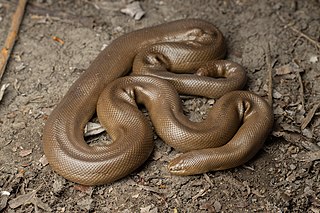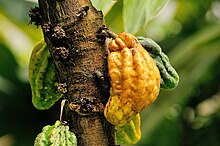
Penguins are a group of aquatic flightless birds from the order Sphenisciformes of the family Spheniscidae. They live almost exclusively in the Southern Hemisphere: only one species, the Galápagos penguin, is found north of the Equator. Highly adapted for life in the ocean water, penguins have countershaded dark and white plumage and flippers for swimming. Most penguins feed on krill, fish, squid and other forms of sea life which they catch with their bills and swallow whole while swimming. A penguin has a spiny tongue and powerful jaws to grip slippery prey.

Herring are forage fish, mostly belonging to the family of Clupeidae.

The International Union for Conservation of Nature (IUCN) Red List of Threatened Species, also known as the IUCN Red List or Red Data Book, founded in 1964, is an inventory of the global conservation status and extinction risk of biological species. A series of Regional Red Lists, which assess the risk of extinction to species within a political management unit, are also produced by countries and organizations.

The macaques constitute a genus (Macaca) of gregarious Old World monkeys of the subfamily Cercopithecinae. The 23 species of macaques inhabit ranges throughout Asia, North Africa, and Europe. Macaques are principally frugivorous, although their diet also includes seeds, leaves, flowers, and tree bark. Some species such as the long-tailed macaque will supplement their diets with small amounts of meat from shellfish, insects, and small mammals. On average, a southern pig-tailed macaque in Malaysia eats about 70 large rats each year. All macaque social groups are arranged around dominant matriarchs.

Jumping spiders are a group of spiders that constitute the family Salticidae. As of 2019, this family contained over 600 described genera and over 6,000 described species, making it the largest family of spiders at 13% of all species. Jumping spiders have some of the best vision among arthropods and use it in courtship, hunting, and navigation. Although they normally move unobtrusively and fairly slowly, most species are capable of very agile jumps, notably when hunting, but sometimes in response to sudden threats or crossing long gaps. Both their book lungs and tracheal system are well-developed, and they use both systems. Jumping spiders are generally recognized by their eye pattern. All jumping spiders have four pairs of eyes, with the anterior median pair being particularly large.

Theobroma is a genus of flowering plants in the mallow family, Malvaceae, that is sometimes classified as a member of Sterculiaceae. It contains roughly 20 species of small understory trees native to the tropical forests of Central and South America.

The shark is a moth of the family Noctuidae. The species was first described by Carl Linnaeus in his landmark 1758 10th edition of Systema Naturae.

The rubber boa is a species of snake in the family Boidae and is native to western North America. It is sometimes known as the coastal rubber boa or the northern rubber boa and is not to be confused with the southern rubber boa.

A near-threatened species is a species which has been categorized as "Near Threatened" (NT) by the International Union for Conservation of Nature (IUCN) as that may be vulnerable to endangerment in the near future, but it does not currently qualify for the threatened status.

Nuctenea umbratica, the walnut orb-weaver spider, is a species of spider in the family Araneidae.

Nuctenea is a genus of orb-weaver spiders first described by Eugène Simon in 1895. Its most familiar member is the Walnut Orb-Weaver Spider, N. umbratica.

An IUCN Red List Critically Endangered species is one that has been categorized by the International Union for Conservation of Nature as facing an extremely high risk of extinction in the wild. As of 2021, of the 120,372 species currently tracked by the IUCN, there are 8,404 species that are considered to be Critically Endangered.

Cosmophasis umbratica is a species of jumping spider found in South and Southeast Asia. They are members of the family Salticidae and the genus Cosmophasis. They are commonly spotted on green vegetation. C. umbratica shows extreme dimorphism when viewed under UV light: males reflect UV on all body parts that are displayed during intraspecific interaction, while females and juveniles do not reflect UV at all. It seems that C. umbratica uses this in sexual signaling. A similar phenomenon is found in some butterflies. For example, several species of Colias and Gonepteryx, both of the family Pieridae, also display sexual signaling.
Herrania balaensis is a species of flowering plant in the family Malvaceae. It is found only in Ecuador. Its natural habitat is subtropical or tropical moist lowland forests; it is fragmented due to colonization, mining, and deforestation.
Herrania laciniifolia is a species of flowering plant in the family Malvaceae. It is found only in Colombia.
Neptunea umbratica is a species of sea snail, a marine gastropod mollusk in the family Buccinidae, the true whelks.

Charina umbratica, known commonly as the southern rubber boa, is a species of snake in the family Boidae. The species is endemic to the United States, in southern California.
Coleophora umbratica is a moth of the family Coleophoridae. It is found in the United States, including Ohio.

Sybra umbratica is a species of beetle in the family Cerambycidae. It was described by Pascoe in 1865.

Herrania mariae is a species of flowering plant in the family Malvaceae. It is native to South America - Colombia, Ecuador, Peru and Brazil. The fruits are locally used as food.
















